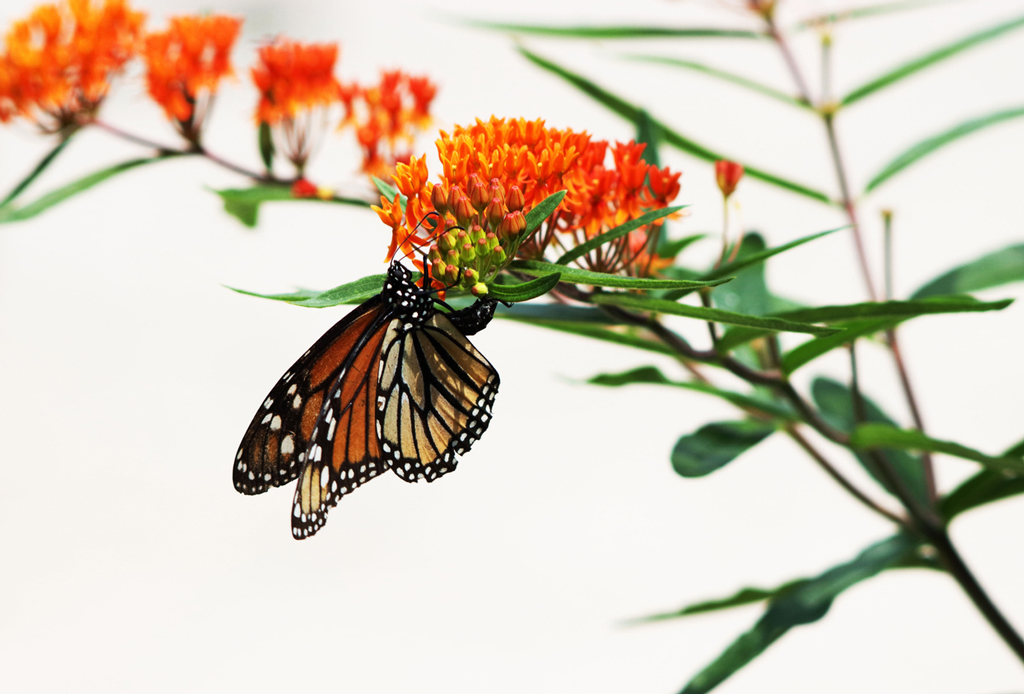
A monarch butterfly lays eggs on an orange butterfly weed, a native plant common to Central Texas. Although it is sometimes called orange milkweed, it does not produce a milky sap like milkweed. iStock image
Monarch super generation now headed for Highland Lakes
The Texas Butterfly Ranch is more a state of mind than a place, although it is a location, both online and on the ground in Central Texas. No, there is no mailing address, at least not for snail mail, and you cannot drive up to a building or walk through an office door. To find it online, visit texasbutterflyranch.com.
To find the physical location, step outside anywhere around the Highland Lakes, San Antonio, and Austin in the spring or fall and look for the millions of butterflies migrating through the so-called “Texas Funnel.” That’s the Butterfly Ranch: the Central Texas Hill Country.
Central Texas serves as a funnel to several migration flyways that come in from the north. When the butterflies are heading south in the fall, they come from across the United States and Canada, heading for the heart of Texas on their way to Mexico. In the spring, they head back the same way.
Monarchs are the only butterfly to make a two-way migration, which is the norm for birds. They are able to overwinter as larvae, pupae, or even adults. They use environmental clues to know when it’s time to pack up and leave.
It can take up to five generations of butterflies to make the entire 3,000-mile trip when the insects are flying north for summer. The trip south in the fall is a different story.
The monarchs that head south to Mexico for the winter are known as a super generation. They can fly up to 50 miles a day, catching free rides on thermal air currents a mile above the Earth’s surface. These insects live eight times longer — up to eight months — than the generation that flew south before them. They can also travel 10 times farther.
The super generation store fat in their caterpillar and butterfly stages, waiting until spring to lay up to 700 eggs.
Both migrations are timed to optimal conditions so that milkweed is in season along the way on which to feed and lay eggs. Milkweed serves as a nursery for monarchs. They lay their eggs on the leaves, which the larvae then eat when they hatch.
The spring migration begins in Mexico with the super generation laying the eggs for Generation 1. When the first generation takes flight, it heads for Central Texas, which is the first stop on the trip north. This is where Generation 1 typically lays its own eggs and Generation 2 is born to continue the trip north.
Each year, the Texas Butterfly Ranch celebrates the bi-annual migration with a butterfly festival, which happens any and everywhere and supports conservation efforts to help stop the declining butterfly population. The virtual events are usually held in the fall.
The festival includes online shopping opportunities for native plants loved by butterflies and virtual workshops in tracking and identifying pollinators in your own environment.
The Texas Butterfly Ranch is located at texasbutterflyranch.com and in the hearts, minds, and backyards of nature lovers deep in the heart of Texas.
editor@thepicayune.com












